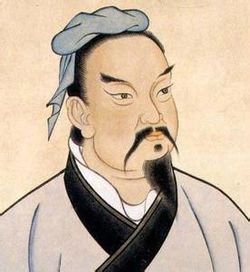Can a 2,500-year-old military guide outmaneuver today’s business rivals? The Art of War by Sun Tzu offers strategic wisdom that empowers leaders to navigate 2025’s competitive landscape with precision, proving its timeless value for strategic thinking.

Summary
Written in the 5th century BCE by Chinese general and philosopher Sun Tzu, The Art of War is a seminal text on military strategy that has influenced business leadership for centuries. Its 13 concise chapters deliver principles for winning conflicts through preparation, adaptability, and minimal resource waste. Translated into countless languages, with Lionel Giles’ 1910 version widely read, the book’s maxims like “Know the enemy and know yourself” guide leaders in market positioning, negotiations, and competitive strategy. With millions of copies sold globally, Sun Tzu’s focus on foresight and leveraging strengths resonates with 2025’s challenges, from outsmarting AI-driven disruptors to navigating global supply chains. This classic remains essential for leaders honing strategic thinking in volatile markets.
Key Takeaways
- Strategic Planning: Prepare thoroughly to anticipate challenges, like using SWOT analyses to guide a startup’s 2025 market entry. Learn more in our How to Develop Strategic Thinking Skills as a Leader in 2025.
- Know Your Enemy and Yourself: Understand competitors and your strengths to craft winning strategies, such as targeting niche markets. Build self-awareness with our Emotional Intelligence in Leadership: Why It’s the #1 Skill for Success.
- Economy of Force: Achieve goals with minimal resources, e.g., optimizing a lean team’s efforts in a budget-constrained startup.
- Adaptability: Adjust tactics to disruptions, like pivoting marketing strategies during economic shifts or AI-driven market changes.
- Deception and Positioning: Outmaneuver rivals through calculated moves, such as timing a product launch to disrupt a competitor’s momentum.

Critical Evaluation
The Art of War excels in its concise, universal insights, distilling complex strategies into memorable maxims. Its adaptability to business—treating markets as “terrain”—makes it a powerful tool for leaders, as explored in our How to Develop Strategic Thinking Skills as a Leader in 2025. However, its ancient military context requires readers to translate concepts to modern settings, and some translations vary in clarity. The emphasis on deception may raise ethical concerns in 2025’s transparent leadership landscape, where authenticity is paramount. Additionally, the book’s focus on competition overlooks collaborative strategies vital for today’s team-driven workplaces. Despite these limitations, its principles remain a robust framework for strategic leadership.
Who Should Read This?
This book is ideal for entrepreneurs, executives, and managers in competitive sectors like tech, finance, or e-commerce. It’s especially valuable for leaders navigating 2025’s volatility—think AI disruptions or supply chain challenges—seeking to sharpen their strategic foresight.
Read The Art of War to master strategic leadership. Apply its insights with our 30-Day Vision Execution Planner at LeadershipFoundry360.com. Share your strategies below!

Relevance for 2025 Business Leadership
For 2025 leaders, The Art of War aligns with the strategic thinking skills outlined in our How to Develop Strategic Thinking Skills as a Leader in 2025. Sun Tzu’s “know the enemy and yourself” principle mirrors competitive analysis, where startups use tools like SEMrush to study rivals’ digital strategies, enhanced by self-awareness from our Emotional Intelligence in Leadership: Why It’s the #1 Skill for Success. Adaptability is critical as AI reshapes industries—e.g., a retail startup shifting to e-commerce amid supply chain volatility. The “economy of force” suits lean startups, maximizing ROI on limited budgets, like focusing ad spend on targeted LinkedIn campaigns.
However, Sun Tzu’s ideas need modern adaptation. His deception tactics, like feinting weakness, must align with 2025’s demand for authenticity, as discussed in your April 7, 2025, conversation on inclusive cultures. Misleading stakeholders risks trust, so leaders might use strategic timing instead, like delaying a product reveal for impact. The book’s competitive focus overlooks collaborative teams, vital in flat organizations (per March 10, 2025, conversation). Pairing Sun Tzu’s strategies with team synergy, as in your April 6, 2025, team-building resources, creates a balanced approach. By blending ancient wisdom with modern ethics, The Art of War equips leaders to conquer 2025’s challenges with clarity.


